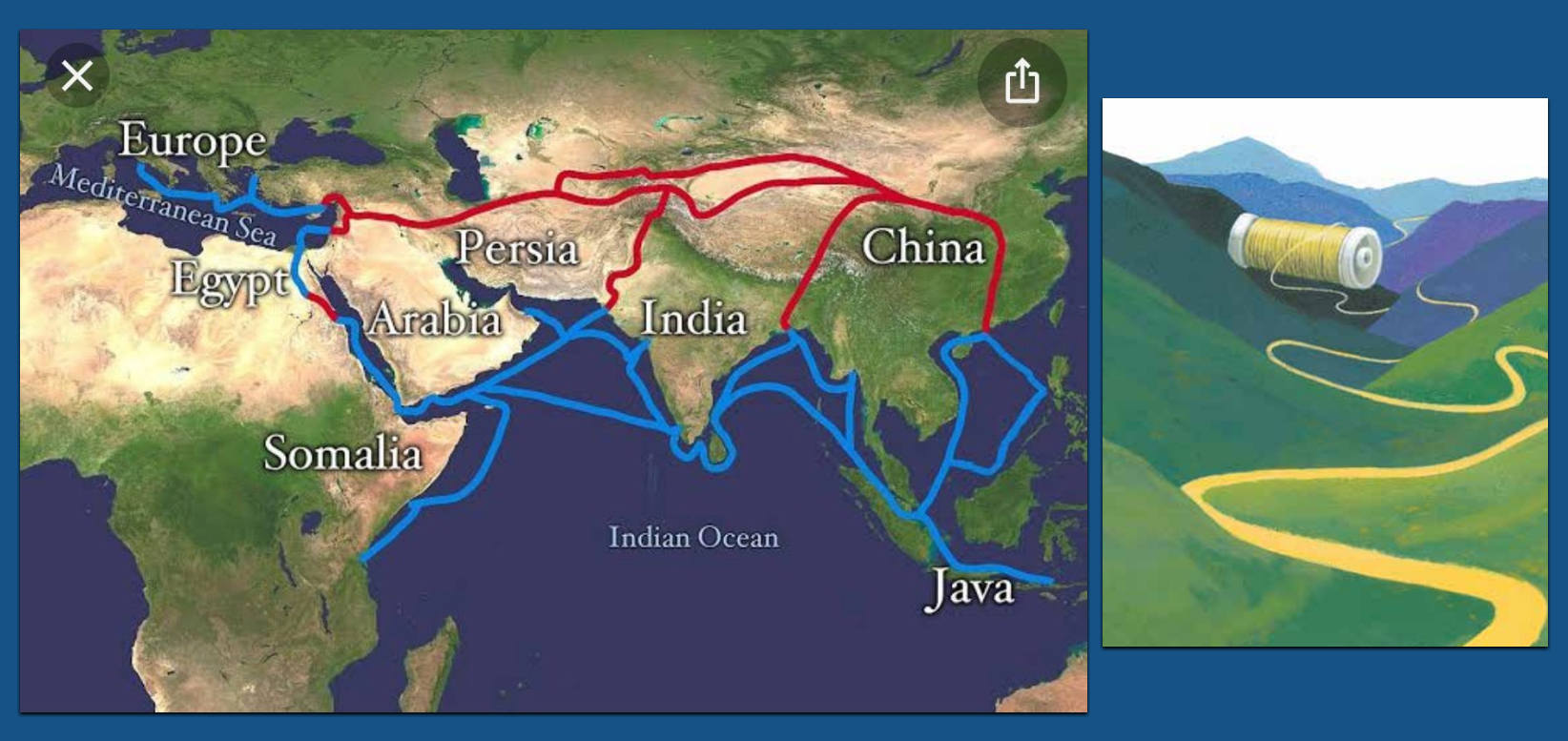Silk road dreams alive and well

One cannot but forget the famous Silk Route as the history of the world is closely linked to that of trade over the centuries. And this was the route that connected the East to the West, bringing smooth and soft Silk fabric along with it and spanned civilizations.
It was a significant part of the development of several civilizations including that of India, China, Persia (Iran), Arabia, Egypt and Rome and named after its most precious and valuable commodity even though many other items were also traded along with it like spices, gold and medicines. In turn, it helped spread the ideas, philosophies and religion to name a few.
Believed to have originated in China, slowly and gradually its cultivation spread to other ancient civilizations through Sericulture- the process of cultivating silkworms to produce silk-and spread far and wide to Korea, India, Japan besides Arab and Byzantine civilizations.
In our country, traders introduced Chinese silk mainly from Samarkand and Bukhara and it started gaining popularity among the royalty and aristocracy. Jamwar and brocade weaving centers in India developed in holy cities and trade centers because of demand for expensive fabrics by the royal families and temples. The ancient centers were situated mainly in Gujarat, Malwa and South India. In the north Delhi, Lahore, Agra, Fatehpursikri, Varanasi, Azamgarh were among the main centers for brocade weaving. The most well-known jamwar weaving centers were in Assam, Gujarat, Malwa and South India.
The art of rearing silkworms and manufacturing and weaving silk cloth may have come to Assam and India through the South West China route. However, it can be pointed out here that although Assam imported silk from China, she also had her own indigenous variety of silk. Assam and other parts of North East India transported local handicrafts, natural products, and silk and other textile products to Burma, now Myanmar. At first, India and Japan learnt the science of sericulture and soon joined in on the eastern monopoly of silk production.
However, for all its value as a trading commodity, the fabric’s greatest legacy may well be derived from the route it forged across Eurasia. And thus, connecting East to West, the Silk Route was considered the most important land route in pre-modern world history. As the trade flourished in the course of time and headed southward, it came across the Indian subcontinent where cities like Taxila and Peshawar (now in Pakistan) became nodal points of commerce and cultural exchange.
In fact, as the silk production spread from China to other parts of the world, the main commodities that could be exchanged were luxury items like silk which is a high value, low bulk commodity besides spices and medicines and gems. Even though this route enjoyed great prominence for close to 15 centuries, facilitating the spread of ideas, cultures and goods from Asia to Europe, it peaked mainly during the Mongolian Empire in 13 th century when China and Central Asia were controlled by Mongol Khans. However, with the rise of prominent sea routes between Europe and Asia and Europe and America in the 15 th century, trade along the 10,000 km long Silk Road virtually ended.
But from India’s point of view, these routes were important for the trade of not only silk but spices, precious stones and other luxury goods as well that were highly valued in the ancient world. In India the ancient Silk Road covered states of Jammu- Kashmir and Uttar Pradesh (present day Uttarakhand).
The route also played a significant role in the cultural exchange between India and other countries besides of course, facilitating the exchange of ideas, religions and artistic styles. For instance, Buddhism spread to Central Asia and China through the Silk Route.
To name a few, Ladakh is one such great example of this cultural exchange as this was an important crossroads on the Silk Route between India and Central Asia.
The route passed through Ladakh via the ancient routes of the Indus Valley which connected the Indian subcontinent to Central Asia. Leh town was a vital centre of trade on this route. Similarly, the Gartang Gali in Uttarkashi, Uttarakhand, was an integral part of the ancient trade routes of the Silk Route. Back in those days, Gartang Gali was used by the Mongol armies under Genghis Khan and his successors to invade India and establish their rule in the region.
Source: Himalayan News Chronicle
Comment :
Hot News
-
1.
Kathmandu University to Host 25th International MELOW Conference on Literature and Landscapes
-
2.
Global IME Bank Honored with Two Titles at Euromoney Awards for Excellence 2024
-
3.
Global IME Bank and Gulf Exchange Partner to Simplify Money Transfers from Qatar to Nepal
-
4.
Nepal Records New Bird Species: Spotted Flycatcher Found in Mustang
-
5.
“Ajima and 6 Gender Identities: Exploring Kathmandu’s Matriarchal Heritage”









